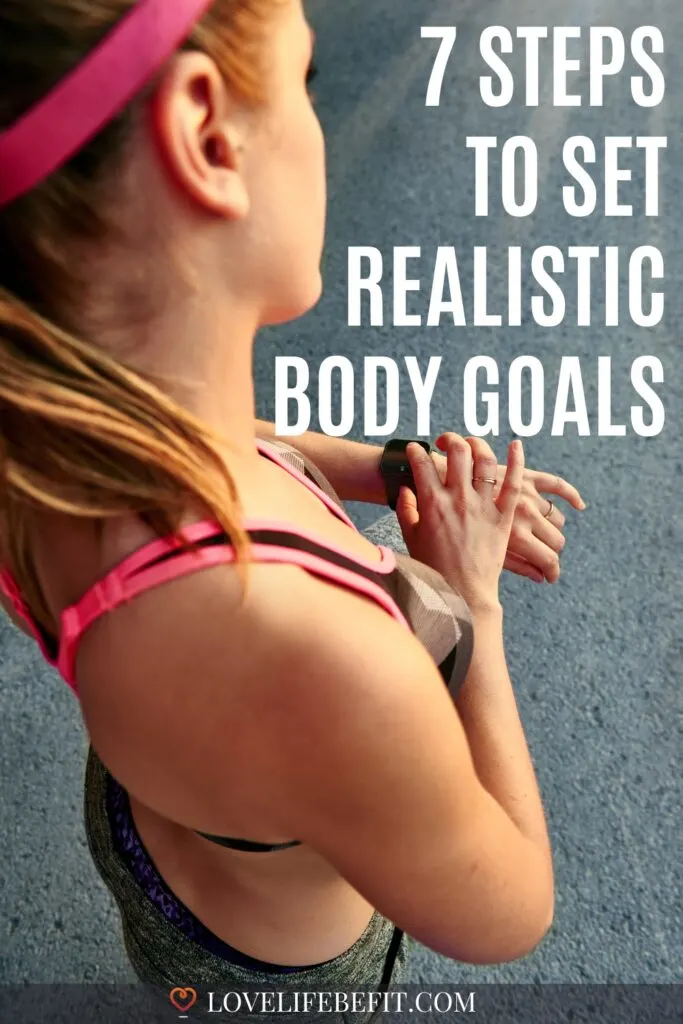Setting fitness goals is the best way to improve your health and fitness. But goals easily become wishlists and dreams unless they’re realistic and come with a plan to turn them into reality.
Losing weight, running without getting out of breath, dropping a few clothing sizes… these are all achievable goals but to get results you’ll need a plan.

What Are Fitness Goals?
A fitness goal is a physical target or challenge you set for yourself. The best goals have a time limit, are realistic based on your current fitness level, are specific to your personal aims, your sport, or the way you train, and can be measured.
The 7 Steps To Achieve Your Goals
Start getting results with these 7 steps:
- Set Long-Term Fitness Goals – Achievable goals appropriate for your current fitness level
- Set Intermediate Goals – These keep you on track and motivated
- Measure Progress – You need to know you’re on track
- Be Realistic – Don’t try and do too much too soon
- Make A Fitness Plan – Every step you need to take in detail
- Find Your Motivation – Know why it’s important to you and find your support group
- Reward Yourself – You did it! Celebrate and set another goal!
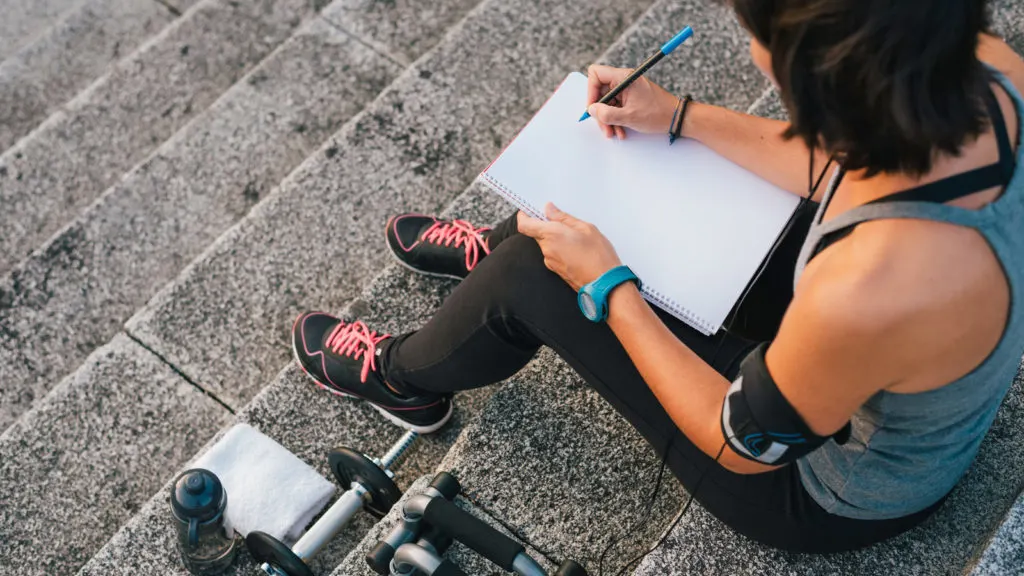
Examples Of Fitness Goals
Goal setting is an important habit if you want to get fit. Your goals should be tailored to your body shape, current fitness, and aspirations. There are many different ways to get fit but these are some common goals:
Body Goals: Weight Loss/Shedding Body Fat
As you progress through life, it’s all too easy to gain a few extra pounds. Many of us would still like to be the weight we were in our early twenties.
It’s not just because of body image, it’s well known that carrying excess weight is bad for our health. (You can check out your BMI and make sure your weight is in the healthy zone).
If you’re looking for permanent weight loss it’s best achieved slowly at no more than 1 to 2 pounds a week. That can sound slow but can be 10 pounds plus over just 10 weeks.
Weight loss can also be in inches lost from your main body measurements such as waist, hips, top of thighs, bust/chest. This is a better indicator for shedding body fat, especially if you’re trying to build muscle.
Examples of weight loss goals are:
- Lose 10 pounds in 10 weeks
- Lose 2 inches from waist in 2 months
- Getting to my target weight of 10 stone in 30 weeks
Setting a time period gives you a measurable target to work towards. It’s best to break down long-term goals into short-term goals which are easier to work towards.

Strength / Building Muscles
Not everyone wants to lose weight. Some people have the opposite problem and want to gain muscle to feel better about themselves.
Strength building is also very important for a wide range of sports. Even long-distance runners benefit from strength training to avoid injuries and some upper body strength can help you run faster.
Goals can be anything from challenges, such as the number of pushups in a minute, to directly measuring the size of your muscles.
Unless you’re a bodybuilder where looks are very important, weight training challenges are a better indicator of progress.
Examples of strength-building goals are:
- Completing 30 continuous push ups with proper form
- Add 10 pounds to your repetition maximum
- Planking for 2 minutes to improve your core strength
Again, it’s best to set a time frame for your goals. For strength building, you may want to set a few different goals for your fitness routine with each goal targeting a different muscle group.
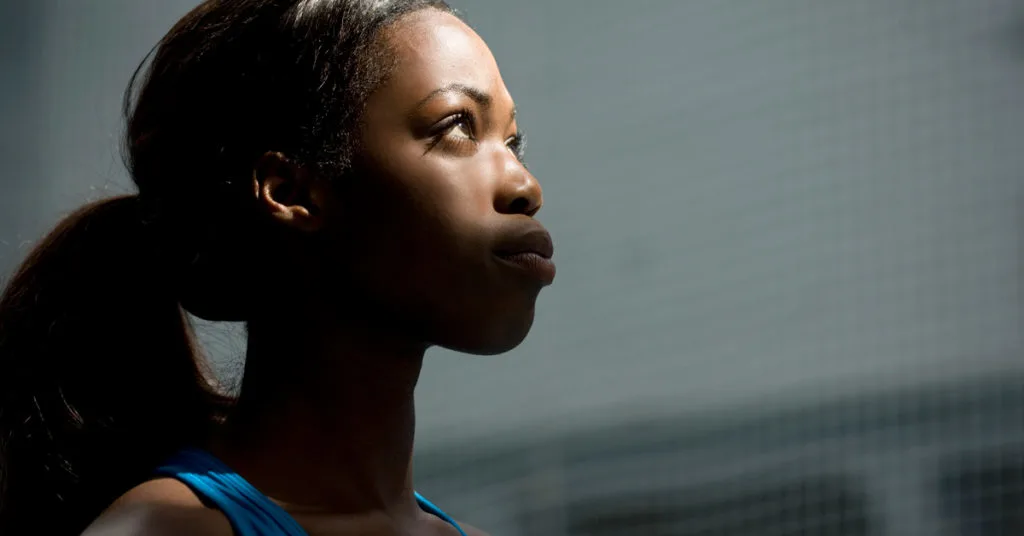
Improving Endurance
Out of breath climbing stairs or did you bet your brother you could run a marathon? Improving endurance is a popular training goal.
Often targeting an event or race is the best way to work at improving endurance.
Examples of goals for improving endurance are:
- Couch to 5K in 6 weeks
- A weekly session of high intensity interval training
- Training to run a half marathon in 16 weeks
- 3-month trekking training to climb Mount Kilimanjaro
- Walk 10,000 steps a day for a month
Successful health and fitness goals are achieved by coming up with a plan to get you there and setting intermediate targets to keep you on track.

Increasing Flexibility
Often overlooked in your workout routine, increased flexibility is an important part of overall fitness. It’s something that’s taken seriously by professional athletes.
It’s not just yoga lovers who focus on flexibility. For example, if you have tight calf muscles you won’t be able to squat effectively.
Increasing flexibility can make a huge difference in the performance of athletes from runners to climbers, weight lifters to football players.
Examples of goals for increasing flexibility are:
- Being able to do a back bend
- A low squat without using your hands for support
- Touching your palms together with your hands behind your back, fingers pointing upwards
Often goals for increasing flexibility can be hard to measure. Most people are looking for incremental improvements. Yet with a bit of thought, it’s possible to come up with some meaningful goals such as simply being able to touch your toes.
Realistic Body Goals
Spoiler Alert: Randomly looking through Instagram, choosing a picture of your favorite influencer, and deciding “That’s the body I want” isn’t a realistic way to set fitness goals.
A good body goal takes into account your current level of fitness. Put your dreams to one side and work with what you’ve got right now.
It’s okay to think big but start off with something achievable. Some of those Instagram bodies weren’t built in 6 months or even a year. (Plus many of them aren’t real and have been digitally enhanced).
Set a goal you can hit in one month, 3 months, or 6 months and make sure realism is dialed in.
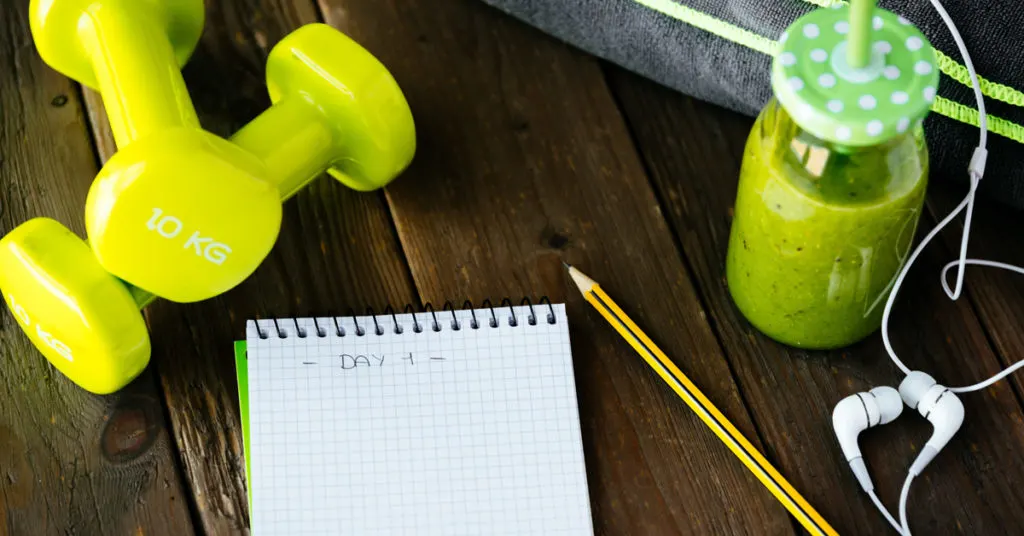
How To Achieve Fitness Goals
Once you’ve figured out what your goals look like, you need a plan to get you there. A plan will help you stay on track as you put in the hard work and the hours of effort.
Getting in shape can be a little overwhelming. You know you want to get fitter but it’s difficult to know how to get there. That’s where these goals can help.
Just follow these 7 steps:
#1 Set Long Term Fitness Goals
Work out what you’re trying to achieve. It could be something obvious such as you’ve entered a race or signed up for a challenge. Or maybe it’s a set of fitness goals such as weight loss, getting stronger, better endurance, and flexibility.
Use the SMART technique for goal setting where goals are Specific, Measurable, Achievable, Relevant, and Time-bound. Find out more about setting SMART fitness goals.
Write down your goals and set a time frame. Be realistic! These goals need to be achievable. By all means, push yourself, but it won’t help your motivation if you set yourself up for failure.
It can help to find a coach or certified personal trainer. Someone to make sure the goals you’re setting reflect your current level of fitness and are achievable in the time frame.
#2 Set Intermediate Goals
It’s easy to lose sight of a big goal. It can be something that’s so far off in the distance it’s easy to lose motivation in your day-to-day training.
Break your long-term goals down into intermediate steps. For example, if your aim is to run a 10K race within 12 weeks, intermediate goals could be running 3K within 5 weeks, and running 5K within 8 weeks.
Hitting those intermediate goals will show you’re on track for your long-term goals and help with motivation.
#3 Measure Progress
How you measure progress will depend on your goals, but make sure you do it. Just thinking you’re on track to hit your goals isn’t the same as knowing you’re on track.
You need to be tough with yourself. If your goal is completing an advanced yoga session with your favorite online instructor, don’t kid yourself that finishing an easy session every day is going to get you there.
Whatever your goals, find a way to measure progress. If you’re not getting the intermediate results you’re looking for, adjust what you’re doing to get there.
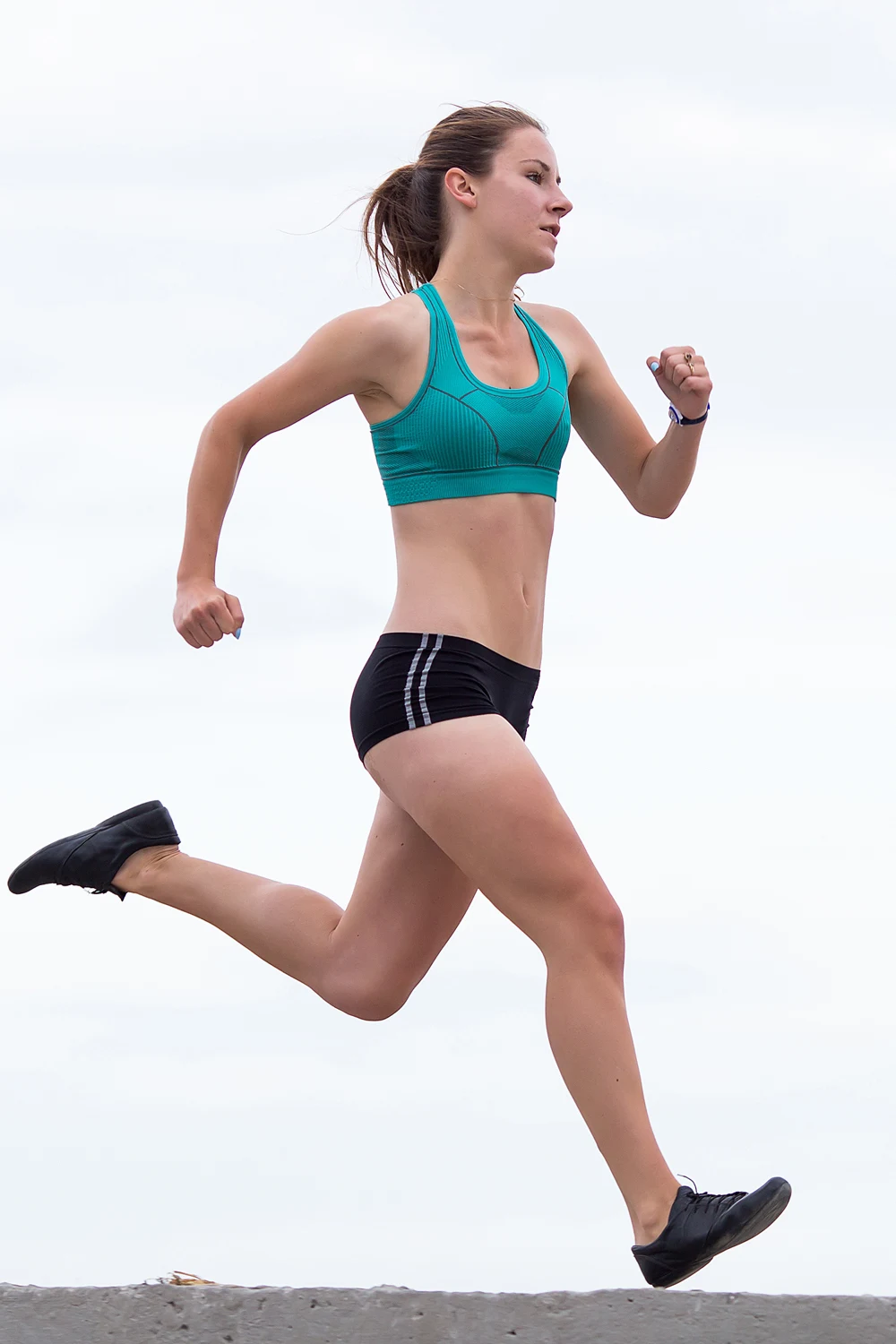
#4 Make Your Intermediate Goals Realistic
Beginners at a new sport often have unrealistic aspirations. Unchecked it normally doesn’t end well.
Start out too hard on your training plan and the result can be an injury. Weeks are wasted as you try to recover.
Make sure those first few short-term intermediate goals aren’t too hard. It’s better to ease into a fitness regime and give your body time to adapt.
Far too many people launch into a fitness regime on New Year’s Day and are too sore to move by the end of the week. If you’re new to training it’s better if the first few weeks feel almost easy.
For weight loss – take it slow! Lose weight too fast and the risk is rebound weight gain or hitting a weight loss plateau.
#5 Make A Fitness Plan
To hit your goals you need to know how you’re going to get there. Break it down on a day-by-day, week-by-week basis.
You need to know what training sessions you’re doing and when… and what healthy foods you’re eating. A random approach to hitting your fitness goals rarely works.
That said it’s a good idea to build flexibility into your training program. Life gets in the way of training so sometimes you might need to move sessions about.
Have a backup plan
It can help to have some backup plans to get fit at home for days when the weather stops you from going out or you can’t get to the gym.
Training early in the morning can be a good idea. It can be a lot easier to get up and go before the distractions of the day stop you from completing your training sessions.
Put copies of your fitness plan where you’ll see them every day. By your bed, in the bathroom, on the fridge… A fitness plan will only work if you stick to it.
#6 Find Your Motivation
Setting your fitness goals is the easy part. Even starting can be easy. It’s sticking to your training plan that’s hard.
It’s really important to find your motivation. It could be visualizing the end result, dealing with negative emotions that have stopped you from succeeding in the past, or simply taking the time to train.
Finding a coach, training a buddy, or a group can help to motivate you. Supportive partners and friends can help but it’s really down to you.
You need to want to reach your fitness goals. It doesn’t work if it’s your partner who wants you to lose weight and get fit. It has to be all you.
Work out why these goals are important for you. If you’ve tried to get fit in the past and failed think about why. What are the blocks to getting fit? Deal with them and find your motivation.
#7 Reward Yourself
Hit a short-term intermediate goal – reward yourself. Your reward can be anything as long as it’s not food-related.
(The link between reward and food is one you want to break and filling up on junk food every time you hit a short-term goal isn’t going to help).
Go to a spa, buy a new outfit, meet up with friends… there are lots of ways to reward yourself. Make sure you feel good about yourself, no ifs, whats, buts, or maybe could have done better. You’ve hit a goal – give yourself a pat on the back!
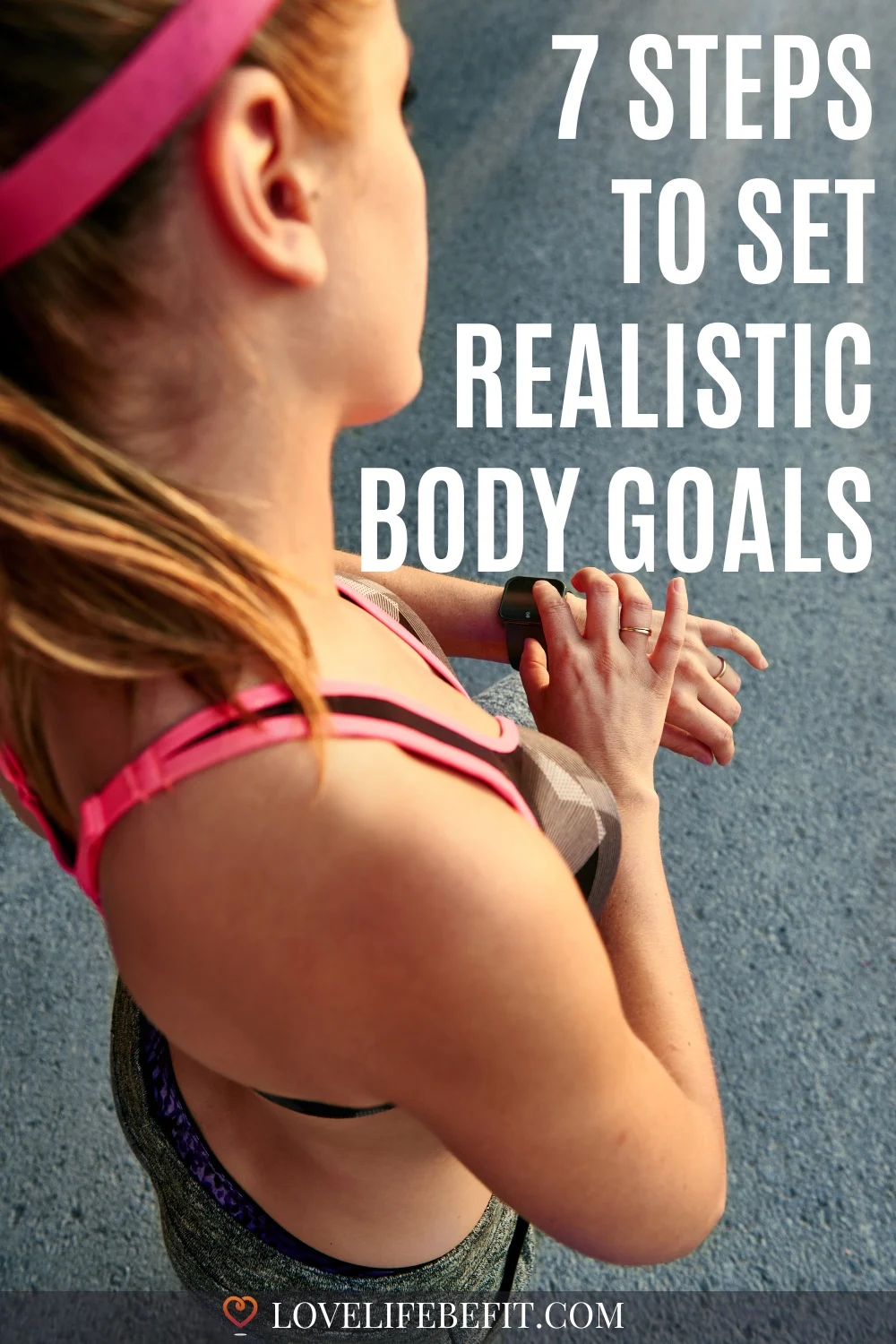
Thoughts From Love Life Be Fit
These 7 steps should help you reach your goals. Once you’ve hit your target don’t stop there!
Set another goal! For example, if you’ve hit your body weight goal, your next goal could be building strength or improving endurance. If you’ve just gone from Couch to 5K, set yourself a target of running 10K.
The possibilities are endless but always make sure you set a new goal to help stay on track and not lapse into your old ways.
If you’re new to getting fit, this might sound like a dreaded endless treadmill. The reality is being fit makes you feel terrific and once you hit your goals you’ll want to continue feeling this way.
If you’ve found this post helpful, you may enjoy these realistic running goals.
Fitness Goals – Frequently Asked Questions
The best goals are measurable and have a timeframe. Examples of goals: “I want to train for a 10K race in 6 weeks’ time”, “By the end of the month I want to be able to do 20 pushups”, “I want to lose 10 pounds in 6 weeks”.
Goals need to relate to you specifically. Goals need to be based on your current level of fitness, preferred exercise, your unique aspirations, and body shape. Play to your strengths. It helps to find a sport or activity you’re naturally good at or something you really enjoy doing. A training goal in a sport you love will help you succeed.
It’s okay to think big when it comes to your ultimate goal but accept that it can take years of goal setting to get you there. For example, if your ultimate aim is to run a 3-hour marathon and you’re new to running, your first long-term goal may be completing a 10K race. In time you can build up to the goal of completing a marathon and then start to work on your marathon time. The long-term goal you’re currently working towards needs to be achievable but that doesn’t mean you can’t dream big. We don’t all have the natural talents of professional athletes, but hard work can get you a long way. People are often capable of a lot more than they realize. Set realistic long-term goals that will keep your training on track but it’s okay to think big for an ultimate goal in 3 to 5 years’ time.

